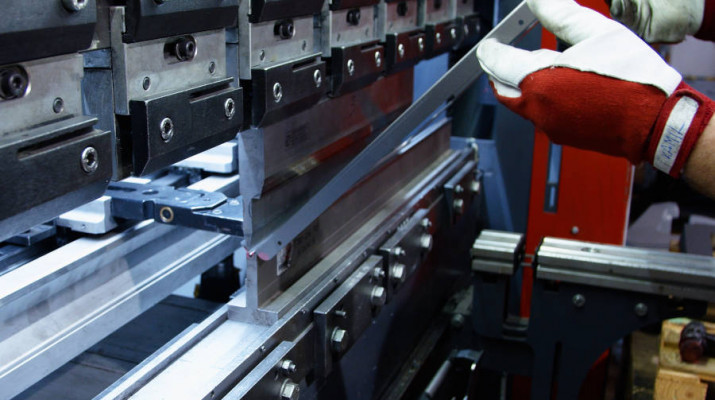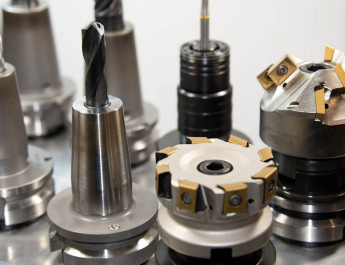In the dynamic world of metal processing, precision and efficiency are paramount. Sheet metal bending, a fundamental process in metal fabrication, has undergone a revolutionary transformation with the integration of modern numerically controlled CNC bending machines. These advanced machines have redefined the sheet metal bending landscape, offering unparalleled accuracy, speed, and versatility. In this article, we delve into the intricate stages of the sheet metal bending process using CNC bending machines, highlighting their significance, benefits, and the technology behind their operation.
Introduction to CNC Bending Machines
CNC (Computer Numerical Control) bending machines have revolutionized the metal processing industry by automating and enhancing the sheet metal bending process. These machines are equipped with advanced software, motors, and hydraulic systems that enable them to precisely manipulate metal sheets into desired shapes with minimal human intervention. CNC bending machines offer numerous advantages, including reduced setup times, enhanced repeatability, and the ability to produce complex geometries that would be challenging to achieve using traditional manual methods.
The Sheet Metal Bending Process: Stages Unveiled
The sheet metal bending process using CNC bending machines can be broken down into several stages, each contributing to the overall accuracy and quality of the final product.
1. Material Preparation
The process begins with selecting the appropriate sheet metal material for the desired application. The chosen material’s thickness, composition, and mechanical properties play a crucial role in determining the bending parameters and the machine’s capabilities.
2. Design and Programming
Modern CNC bending machines are as precise as the instructions given to them. This is where computer-aided design (CAD) and computer-aided manufacturing (CAM) software come into play. Engineers and designers create a detailed 3D model of the part to be bent, which is then translated into machine-readable instructions using CAM software. These instructions include factors such as bend angles, bend radii, tooling selection, and sequencing.
3. Tooling Selection
Choosing the appropriate tooling is a critical step in achieving accurate bends. CNC bending machines are equipped with a range of tools, including punch and die sets. The selection depends on factors such as material type, thickness, bend angle, and desired radius. The tooling setup is customized for each job to ensure optimal performance and precision.
4. Machine Setup
Once the tooling is selected, the machine is set up accordingly. This involves installing the chosen tools, calibrating the machine, and positioning the sheet metal accurately. Modern CNC bending machines often come with automatic tool changers, streamlining the setup process and reducing downtime between jobs.
5. Bending Process
With the machine and tools prepared, the bending process commences. The CNC bending machine’s computer-controlled back gauge positions the sheet metal accurately, ensuring consistent bending angles and lengths. The hydraulic press brake exerts controlled force on the sheet metal, pressing it against the die to achieve the desired bend.
6. Real-time Monitoring and Adjustments
One of the key advantages of CNC bending machines is their ability to monitor the bending process in real-time. Sensors and cameras provide feedback on factors such as bend angle, material behavior, and tool wear. If any deviations are detected, the machine can make automatic adjustments to ensure the final product meets specifications.
7. Unbending and Quality Control
After the initial bending, the sheet metal may need to undergo further processing or assembly. This could involve welding, additional machining, or surface finishing. Quality control checks are conducted to verify the accuracy of the bends, ensuring they match the design specifications.
8. Advantages of CNC Bending Machines
The integration of CNC bending machines into the metal processing workflow offers several noteworthy advantages:
- Precision and Consistency: CNC bending machines offer unparalleled accuracy, ensuring that each bend is replicated with high precision across multiple parts.
- Reduced Setup Times: Traditional manual bending setups can be time-consuming and require skilled operators. CNC bending machines significantly reduce setup times, leading to enhanced productivity.
- Complex Geometries: CNC bending machines can handle intricate and complex bend geometries that would be challenging to achieve manually.
- Minimal Material Waste: The precision of CNC bending reduces material waste, optimizing material usage and contributing to cost savings.
- Automation: These machines automate the bending process, reducing the need for constant operator intervention and minimizing the risk of errors.
- Quick Prototyping: CNC bending machines facilitate rapid prototyping by quickly translating design concepts into physical prototypes.
The Future of CNC Bending
As technology continues to evolve, CNC bending machines are likely to become even more advanced. Integration with artificial intelligence and machine learning could enhance predictive maintenance, further improving machine uptime and efficiency. Additionally, improvements in material handling systems and adaptive tooling could lead to even more versatile bending capabilities.
Modern CNC bending machines have redefined the sheet metal bending process, offering unmatched precision, speed, and efficiency. From material preparation to final quality checks, each stage of the bending process plays a pivotal role in producing accurate and high-quality bent parts. As the metal industry continues to embrace technological advancements, CNC bending machines are poised to remain at the forefront of innovation, shaping the future of sheet metal fabrication.




